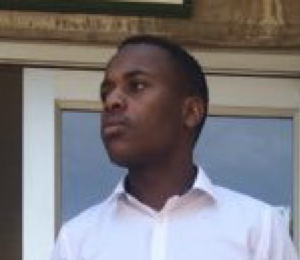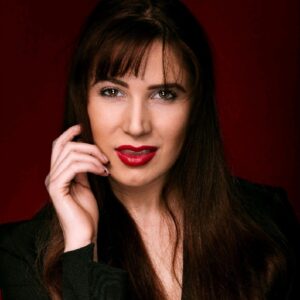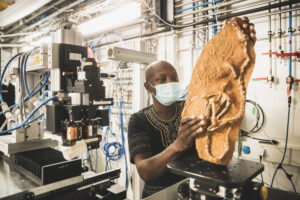Today, the 13 October, two students - Fortune Mokoena and Alicia Potgieter - one a PhD, the other an MSc, left Africa to undergo deep training and perform research in engineering aspects of modern advanced light sources. They will arrive tomorrow morning at the ESRF in Grenoble, France. They follow closely on the heels of their other African compatriot of this trio, who will focus on palaeontology, and who left Africa on the 18 September. This 3rd person, Kudakwashe Jakata, will be doing a Post Doc at the ESRF. The context is to build advanced human capacity in both the design and use of advanced lights sources. Another context is to build the user base of the African scientific community, where the advanced light sources world-wide are premier multi-disciplinary research tools. Yet another context is to work towards a regional and even continental membership by Africa of the ESRF and also other selected advanced light sources. Of course we are cognisant that this is an important part of the roadmap to the African Light Source. Finally, these three young emerging scientists will contribute to building the excellence of the ESRF and also SESAME.
Fortune (Tebogo) Mokoena is a South African and he began his MSc project on 1st May 2020, working remotely due to the COVID-19 pandemic. His project is to participate in the design of the new phase contrast tomography beamline (BEATS) of SESAME (Jordan). This is a multi-institutional project co-ordinated by the ESRF. Phase contrast tomography is seen as particularly interesting for the African Light Source project because of its significant contribution to the heritage and material sciences, especially considering the rich palaeontological record in Africa. Fortune’s internship supported by the ESRF is for a period of one year. Fortune will be registered at the University of Johannesburg in South Africa, but co-supervised by an ESRF staff member.
Alicia Potgieter is a South African and she will begin her PhD project on 26th October 2020. Her project includes theoretical and experimental aspects related to the design, modelling and testing of novel prototype cooling systems. The ESRF-EBS represents a massive increase in light source facility performance leading to a significant increase in the beam power that must be sustained by the beam optical elements. These now require more advanced active cooling, while having superior stability requirements. The project involves immersion in the field of X-ray beamline optical processing, and an array of modelling packages that allow the design and study of dynamical cooling solutions within sensitive mechanical equipment with extreme demands on stability. This research field is also a vital skill set for the future African Light Source. Alicia says "I am so grateful for this one in a lifetime opportunity and to be part of one of the world’s leaders in synchrotron and X-ray research. I look forward to this life-changing experience which opens many doors of opportunity and possibilities. Accept my heartfelt gratitude! Thanks for giving me this wonderful opportunity to work and learn in this beautiful country of yours". Alicia’s internship is supported by the ESRF for a period of two to three years. Alicia will be jointly registered at the University of Johannesburg in South Africa and the Université Grenoble Alpes in France.
Kudakwashe Jakata is a Zimbabwean, and he began his Post Doctoral fellowship project at the ESRF on the 18th September 2020 on the Computed Tomography beamline (ID19 and BM05), focussing on the field of Palaeontology. He is actually a physicist with an interdisciplinary character, crossing over to the field of palaeontology. He obtained his PhD in Physics and has for some time managed the microtomography facilities of the Evolutionary Studies Institute of the University of the Witwatersrand in South Africa. He has represented the palaeosciences within the South African synchrotron community for the last several years. Kuda says "This is an excellent opportunity to learn from some of the best synchrotron scientists. All the knowledge and expertise obtained at the ESRF-EBS will, no doubt, be very useful for many years to come and especially for the African Lightsource. I am on a beamline where I am working with awesome people and there are two techniques, tomography and topography. I am looking forward to learning and using other techniques on other beamlines as the opportunities and needs arise. I feel like a kid in a toy store and I am motivated to look beyond previous possibilities". The postdoctoral position comes after obtaining the LAAAMP FAST award for which he is working at the ESRF on computed tomography and palaeontology. Kuda’s fellowship is supported by the ESRF for a period of three years.